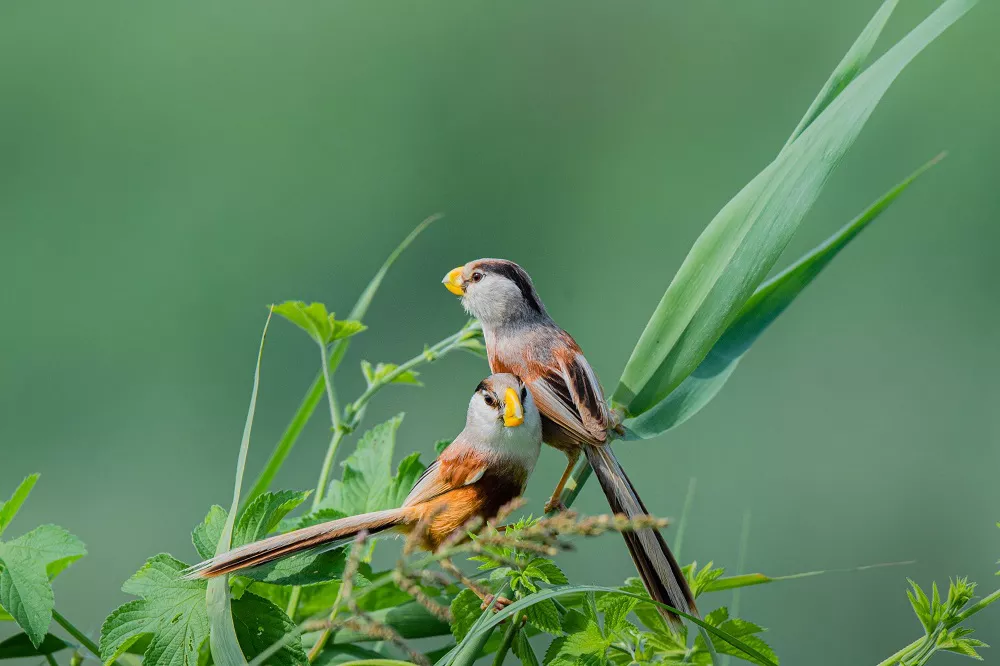Finch eggs are a remarkable testament to the natural world, representing new life and the continuation of avian species. Each species of finch has its unique egg characteristics, reflecting their adaptation to different environments and reproductive strategies. In this article, we explore the appearance and characteristics of finch eggs, providing insights into the captivating diversity found in these fragile yet essential vessels of life.
Appearance of Finch Eggs
Finch eggs are small and oval-shaped, with a pointed end. The shape and size of finch eggs may vary depending on the species of finch. Most finch eggs measure between 0.5-0.8 inches in length and 0.4-0.6 inches in diameter.
The surface of the egg is smooth and shiny. The shell of the egg is relatively thin, making it easier for the baby finch to break through when it’s time to hatch. The color of the eggshell may vary depending on the species of finch; however, most finch eggs have a pale blue or greenish-blue tint.
Size of Finch Eggs
Finch eggs vary in size depending on the species of finch. Some species lay larger eggs than others, with the smallest finch eggs measuring around 0.5 inches long, while the largest finch eggs can be up to 0.8 inches in length.
Coloration and Patterns of Finch Eggs
Most finch eggs have a pale blue or greenish-blue tint, but the color of the egg may vary depending on the species of finch. For example, some finch species lay eggs that are white or cream-colored, while others lay eggs that are pale pink or grayish-brown. The specific coloration and patterns are species-specific and often influenced by environmental factors. Here are some common examples:
Solid Colors:
Some finch species lay eggs with solid colors, which can range from pure white to pale blue or greenish-blue. Examples include the Zebra Finch (Taeniopygia guttata) and Society Finch (Lonchura domestica), which produce eggs with a solid light blue hue.
Speckled or Spotted:
Many finch eggs exhibit speckles or spots, which provide effective camouflage within their nest environment. The coloring can vary from light to dark and can appear as speckles, dots, or blotches. The intensity and density of the spots may vary, even within the same clutch. The House Finch (Haemorhous mexicanus) and American Goldfinch (Spinus tristis) are known to lay eggs with speckled patterns.
Streaked or Marbled:
Certain finch species produce eggs with streaks or marbling patterns. These patterns create intricate designs that aid in nest concealment and protection against predators. The Zebra Finch and the Gouldian Finch (Erythrura gouldiae) are notable examples with eggs exhibiting fine streaks or marbling, often in shades of gray or brown.
Solid Colors with Cryptic Markings:
Some finch eggs have a solid base color with cryptic markings that provide additional camouflage and protection. These markings can appear as fine lines, dashes, or scribbles. The African Silverbill (Euodice cantans) produces eggs with a solid white or cream base color, adorned with delicate cryptic markings.
One interesting fact about finch eggs is that they are often laid in nests that are built by the female finch. These nests can be constructed from a variety of materials, including twigs, grasses, and feathers, and are typically lined with soft materials like moss, fur, or feathers to provide a cozy and warm environment for the developing eggs.
It is also worth noting that finch eggs are usually laid in clutches, or groups of eggs, rather than singly. Depending on the species, a clutch can contain anywhere from one to ten eggs. The incubation period for finch eggs varies depending on the species and environmental conditions, but typically lasts between 11 and 14 days.
What Month Do Finches Lay Eggs?
Finches typically breed and lay eggs during the spring and summer months, which in their natural habitat is usually from March to August. However, the specific breeding season can vary depending on the species of finch and their geographical location. Some finch species may breed throughout the year if the conditions are favorable, while others may only breed once a year.
Conclusion
In conclusion, finch eggs are small and oval-shaped, with a pointed end. The surface of the egg is smooth and shiny, and the color of the eggshell may vary depending on the species of finch. These eggs are usually laid in nests built by the female finch and are typically incubated in clutches for a period of around two weeks. Understanding the appearance and behavior of finch eggs can provide valuable insights into the life cycles and habits of these fascinating birds.
Related Topics:
- How Big Are Hummingbird Eggs? All You Need To Know
- What Color Eggs Do House Finches Lay? [Revealed! ]
- What Color Are Bald Eagle Eggs?
- How Many Times a Year Do Zebra Finches Lay Eggs?


 Facebook
Facebook  Instagram
Instagram  Youtube
Youtube 